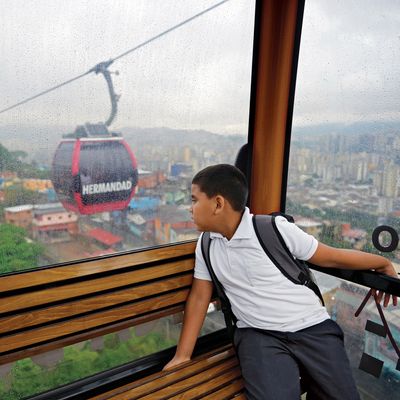
In the U.S. at least, the late-summer season marks the beginning of the school year. How kids commute to class might seem like the least of parents’ educational concerns, but the solutions reflect a daunting matrix of values and opportunities. In the U.S., where 25 million kids pile into golden-yellow buses each morning, new initiatives are encouraging biking and walking to school as important ways to foster independence, overall health, and cognitive development. Meanwhile, parents in some communities have faced censure for letting their kids walk at all. Last school year, a Tennessee mother was charged with neglect after making her daughters walk as punishment for misbehaving on the bus (she was driving slowly near them in a gold Cadillac). “Smartbuses” in Singapore aim to reassure anxious parents with app updates when their kids make it to school, while safety concerns have raised questions in India over the common practice of piling children into autorickshaws.
Caracas
Cable Cars Let Kids Float Over Dangerous Neighborhoods
In San Agustín, a favela located in Caracas’s hilly east side, children commute to school by gondola. The Caracas Metrocable, which was erected in 2010, shortens the commute to class. Plus, students avoid gang violence they might pass through on the street. (In 2016, Caracas was named the world’s most violent city.)
Springfield, Mass.
While “Walking Buses” Let Them Pass Safely Through Them
After discovering that 90 percent of students living within a mile of school were being driven, the Springfield school district launched a Walking School Bus: Parents, teachers, and policemen shepherd children to school, sometimes through high-crime areas. It started in 2010 with just six to ten kids, and it’s now used by nearly 200.
Singapore
A “Smartbus” Tells Parents When Their Kids Get to School
The Singapore school Transport Association is in the process of rolling out a fleet of smartbuses. Parents are notified ten minutes before the bus gets to their home, when their child boards, and again when she arrives at school. The system also takes automatic attendance and provides drivers with a data-based route.
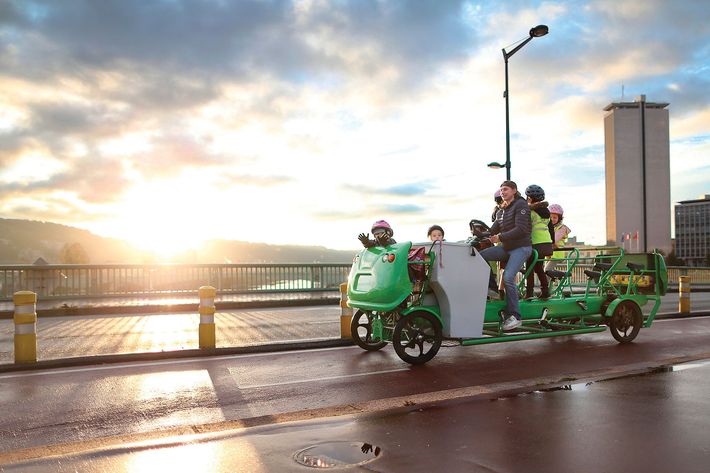
Rouen, France
And “Bike Buses” Are Increasingly Common in Europe
Introduced first in the Netherlands, the group bicycle — with eight sets of kids’ pedals, a driver seat for an adult, and a bench for non-pedalers — was introduced in 2014 in the northern city of Rouen. The buses are equipped with an electric motor to help the children over cobblestones and up hills.
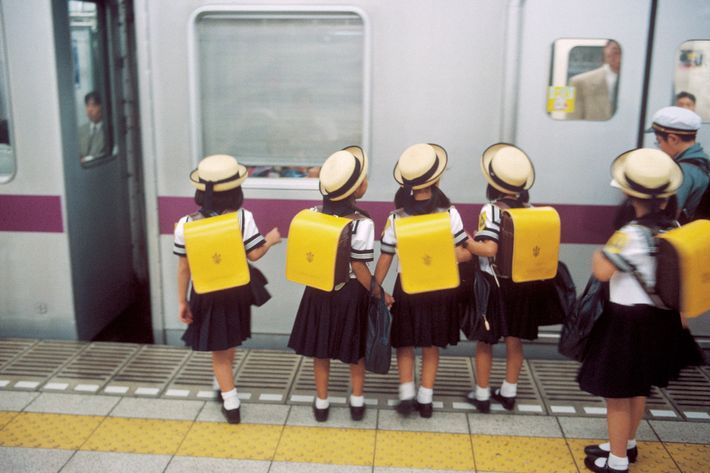
Tokyo
Some Kids Start Taking the Subway at Age 6
Children in Japan are often expected to make the trip to school and back entirely on their own. “Many of our grade-one students come to school by themselves,” says Cassie Kitani, a principal at Yokohama’s Saint Maur International School. “They walk or bike. We have some little ones who catch the train to school alone, too. In Japan, independence is encouraged at a young age — it’s normal for children to travel by themselves. There are two train lines close to our school — Yamate Station and Motomachi-chukagai Station. So even when the little ones are alone, there are a number of older students on the same train. They’ll help if needed.”
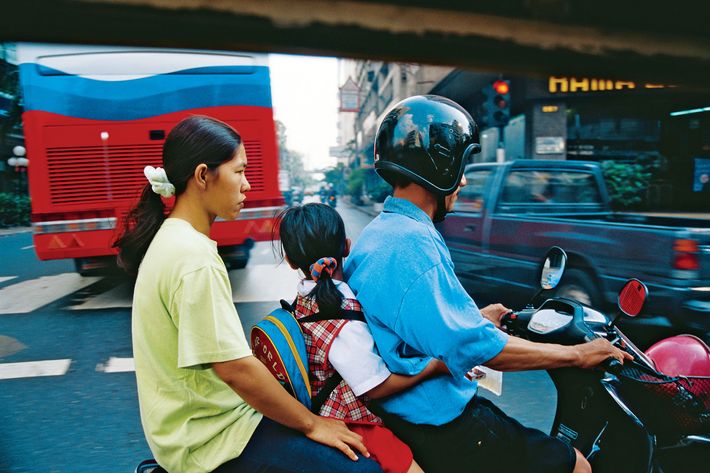
Bangkok
Motorcycles Are Common But Risky
Students across Thailand ride to school on the back of their parents’ motorcycles. An estimated 1.3 million children ride on them regularly, but only 7 percent wear helmets; 2,600 children are killed and 72,000 injured every year in crashes. Still, motorcycles are vital in providing inexpensive access to school.
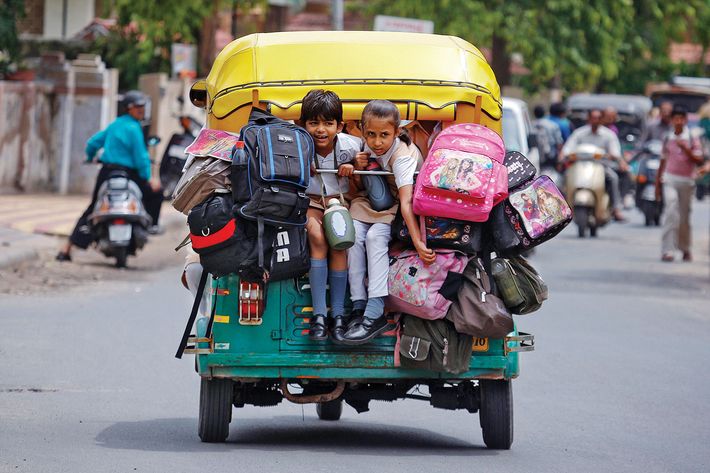
Ahmedabad
As Are Rickshaws
Amid a shortage of buses in India, schoolchildren pile precariously into privately hired autorickshaws, with 10 to 12 students filling each. Though the vehicles violate local safety laws, the police in some cities have argued that stopping the rickshaws would only make many students late for school.
Portland
There’s a Citywide Effort to Teach Kids How to Bike Commute
In an effort to encourage alternatives to driving, Portland’s Beaumont Middle School is building biking into its curriculum. The P.E. teacher spends eight weeks with the sixth-graders on safety and upkeep: how to adjust helmets for proper fit, use hand signals, control the bike in an emergency stop, interpret street signs, and navigate safely through intersections and driveways. The program is part of a citywide effort in collaboration with the national nonprofit Safe Routes to School, which helps implement traffic-safety changes — creating trail paths to connect neighborhoods to schools or fixing sidewalk gaps — that make commuting easier. Since it launched in 2006, Safe Routes has increased the number of kids who bike or walk to school by 35 percent. Beaumont’s principal, Harriette Vimegnon, says safe roads aren’t the only challenge in getting more kids biking in Portland: “There are a lot of bike thieves around,” she says. “And sometimes kids will forget their locks. Or sometimes they lock their locks to their bikes.”
Three Ways New York Kids Get to School (That Aren’t the Subway)
New York’s school system services 1.1 million kids, 60 percent of whom use DOE-provided MetroCards. Only 143,700 students take school buses. As for the rest …
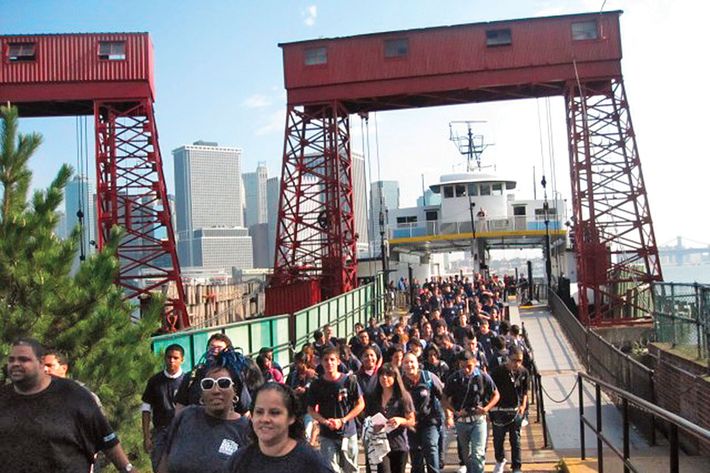
Governors Island
Some Kids Are Ferried to School in an Actual Ferry
At New York Harbor School, students have to catch the 8 a.m. ferry from the Battery Maritime Building to make first period. “The first day I went I was pretty nervous,” says Emely Carrillo, a 17-year-old senior at Harbor. “I sat at the top, outdoor, with all my friends. I was pretty in awe of the view — it seemed sort of surreal to be taking a boat to school. You pass the Statue of Liberty.”
Upper East Side
For Others, the “Ferry” Is an Uber
Some private-school students who live on the Upper East Side and attend school in the neighborhood depend on apps like Uber and Via to get them to school and back. “I lived about 15 blocks from school, and I took an Uber most days,” says recent Chapin School graduate Jillian Singer. “My friends and I wouldn’t share our Ubers with friends — we’d get our own.”
Coney Island
And When There’s No Bus, Parents Hire One
Mark Twain Intermediate School, a magnet school for the gifted and talented, attracts students from all over the city — but it doesn’t provide busing for far-flung students. Rather than send their kids on a two-hours-plus train ride, some parents pay for Superior School Bus Co., a private service. It provides door-to-door service, but pickups can still be as early as 6 a.m. to make all the stops before the first bell.
Of Course, That’s Nothing Compared to How Kids in Rural Areas Get to School
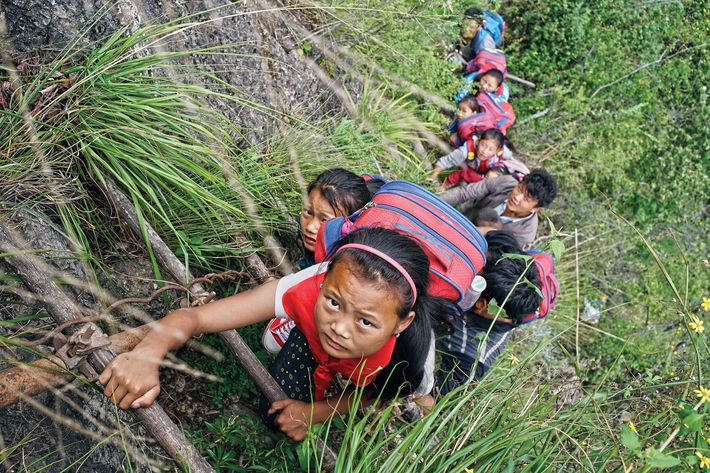
By Ladder in China
Children in Sichuan province climb a 2,625-foot-high bamboo ladder secured to a cliff.
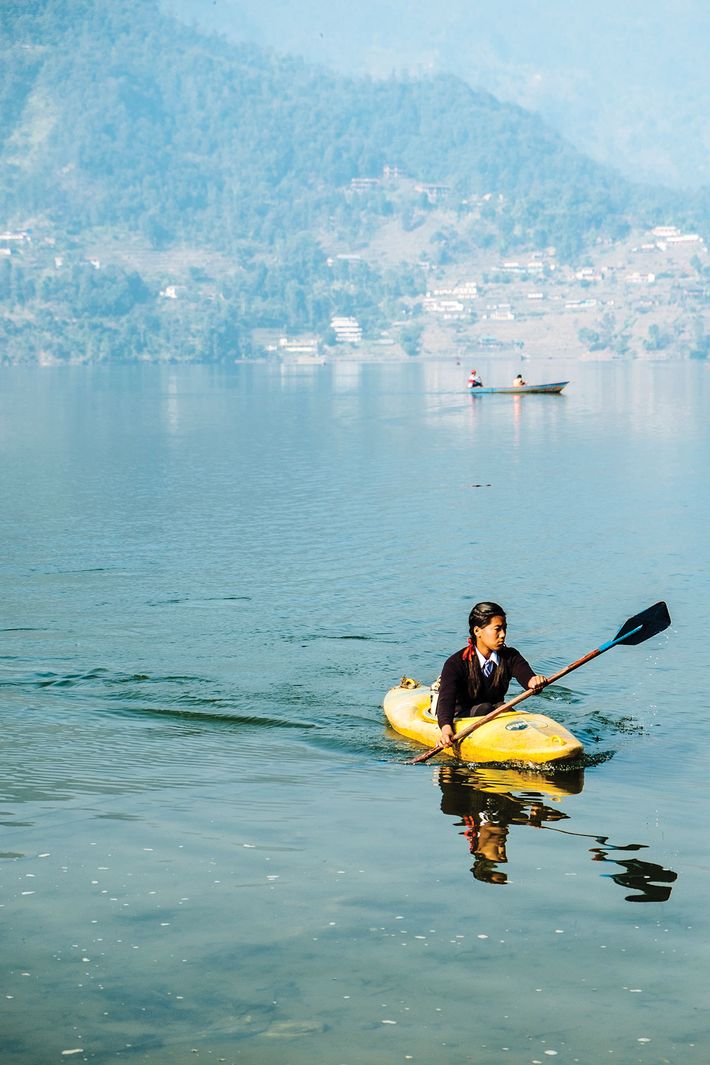
By Kayak in Nepal
A girl from Pokhara, Nepal, paddles across Phewa Lake.
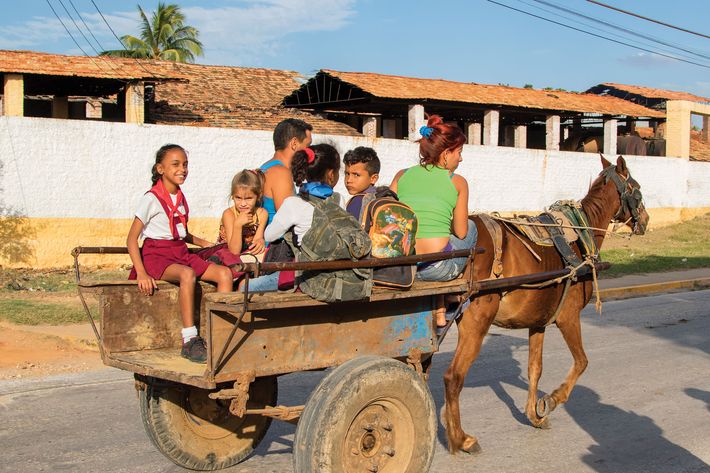
By Horse in Cuba
In the city of Trinidad, children climb into a horse-drawn cart each morning.
In Michigan, Some Children Take Snowmobiles
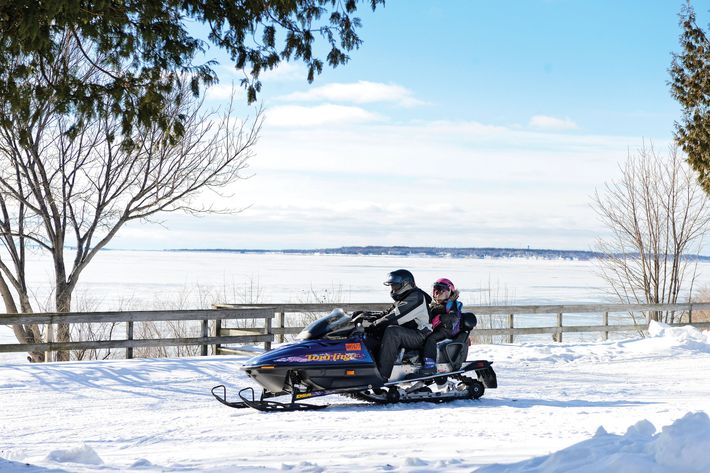
On Mackinac Island, the majority of the district’s 70 students commute to class via snowmobile during the winter — occasionally hauling siblings and neighbors on plastic sleds.
*This article appears in the September 5, 2016, issue of New York Magazine.





























